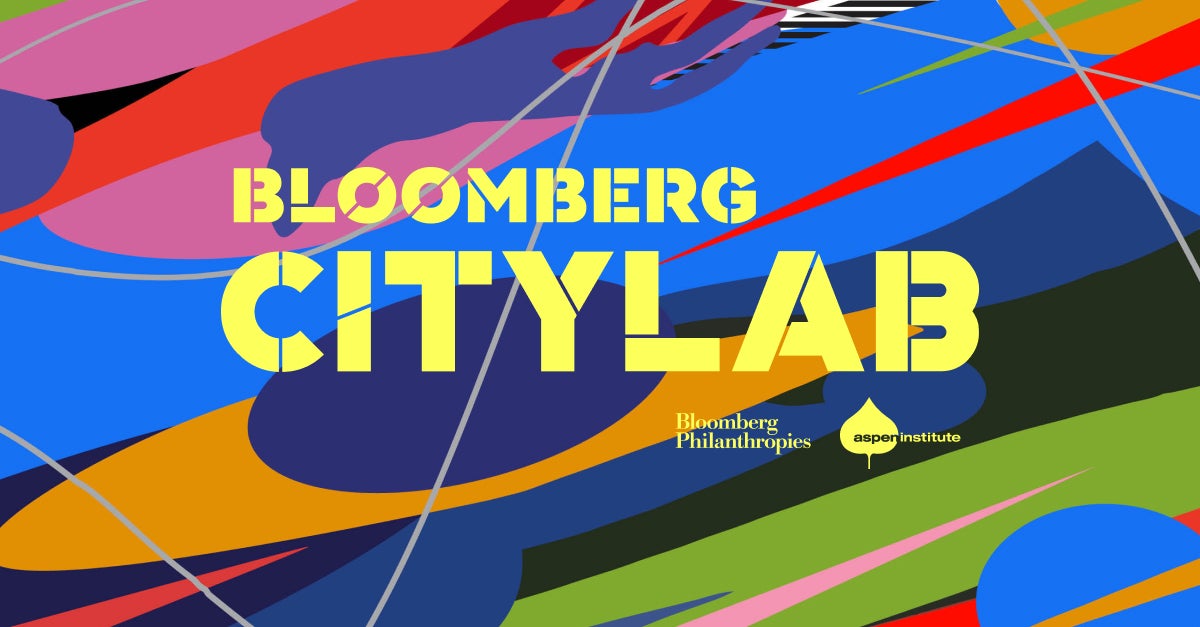“This is a way we can step out of our daily work and be enlivened by new ideas,” said Jennifer Bradley, the founding director of the Center for Urban Innovation. “We have to think in new ways to make change on the issues that we care about.”
In September, the focus was on empowering youth. Rajiv Vinnakota, the executive vice president of Youth & Engagement Programs at the Institute, asked, “What could we build if we implemented the Aspen philosophies of leadership and civil discourse in programs that engage young people?”
Carolyn Zelikow, manager of the Urban Innovation Lab, noted that cities are particularly adept at piloting the kind of policy experiments set forth by social innovators. “Despite the narrative that the United States is a country in decline,” she said, “cities throughout America are actively solving tough challenges from within.” Ideas ranged from design as a weapon against institutional racism to mobilizing marginalized youth in Baltimore’s Inner Harbor for a “charm offensive” against discrimination.
Dona Anderson, a senior at Capital City Public Charter School in Washington, DC, and a participant in the Aspen Challenge, offered a big idea that was deceptively simple: play. As part of the Aspen Challenge, in which students are asked to come up with solutions to real-world problems in their communities, Anderson’s team created pop-up playgrounds at bus stops. They found that these spaces helped young people to socialize and relieve stress—and that adults were quickly drawn into the fun.
“Play isn’t just for kids,” Anderson said. “You can laugh. You should try it.” She has plans to scale up the Aspen Challenge project after her graduation and spread it to other sites around the District and maybe even the country.
“The way to counter stress is to make more opportunities to have fun,” she added. “Things instantly become less bad the second that you think that they won’t be. And that is how you can encourage people to change the world.”
Mark Hecker, the executive director of Reach Incorporated, an organization that hires teenagers to be elementary-school reading tutors, works with young people across the DC area. His big idea, which he has implemented in his own work, is to flip a prevailing tendency in schools. Currently, schools often expect good behavior from kids and then reward them for that behavior with additional responsibility. Hecker argues that responsibility should be given first—and then good behavior will follow afterwards.
“I’ve been cursed out, and everything you can imagine,” Hecker said. “But you don’t push kids away. You bring them back. You say, ‘We trust you to do great things even when you’re acting like you don’t deserve it.’ Eventually, they will step up and earn that trust.”
To Hecker, solutions implemented in youth education must incorporate social behavior and be relevant and developmentally appropriate. What’s more, he added, students must be properly supported—no matter what.
Innovation at the micro level can also lead to changes at a grander scale. Caroline Hill, founder of the DC Equity Lab, designs interventions that create equity in schools, organizations, and communities, with the underlying mission of dismantling institutional racism.
One of her organization’s studies looked at truancy and found that when students are truant, it greatly helps to have a more personal interaction to tell them that they missed class.
Automated calls, Hill said, had the opposite effect. The solution? The DC Equity Lab brought in DC slam poets to make the truancy calls more tailored to each student.
“Racism is something that was intentionally designed, but it can be can be redesigned and dismantled,” Hill said. “And equity by design is one of the first steps. We have a moral imperative to help educators, policymakers, and analysts design the future that we lead.”
For those working with youth, the first lesson is often simply to listen. As Celia Neustadt, executive director of Baltimore’s Inner Harbor Project, said, “One of my students told me that in order to fix your ‘youth problem,’ you have to actually include youth and let them lead the solution.”
Neustadt helps teenagers organize around issues of exclusion and violence in public spaces. Responding to the high volume of arrests and incidents between teenagers and business owners in Baltimore’s Inner Harbor, her project helped create “youth ambassador brigades”: high-school students, who confer with police and representatives of other local institutions to build understanding. The brigades have led to a dramatic reduction in arrests.
This can be replicated in other public spaces around the country, Neustadt said, like Gallery Place in Washington, DC, and Millennium Park in Chicago.
September’s Big Idea Night marked the beginning of a focus on youth empowerment at the Urban Innovation Lab, which will include deep-dive roundtable sessions and an action paper. The Urban Innovation Lab has plans to host similar events focused on themes that are of high relevance to policy conversations in the DC community.
“We have to begin by recognizing the creativity and public service here in the District,” Zelikow, of the Urban Innovation Lab, said. “We want to pollinate emerging ideas that will accelerate equitable thriving both here and across the nation.”
